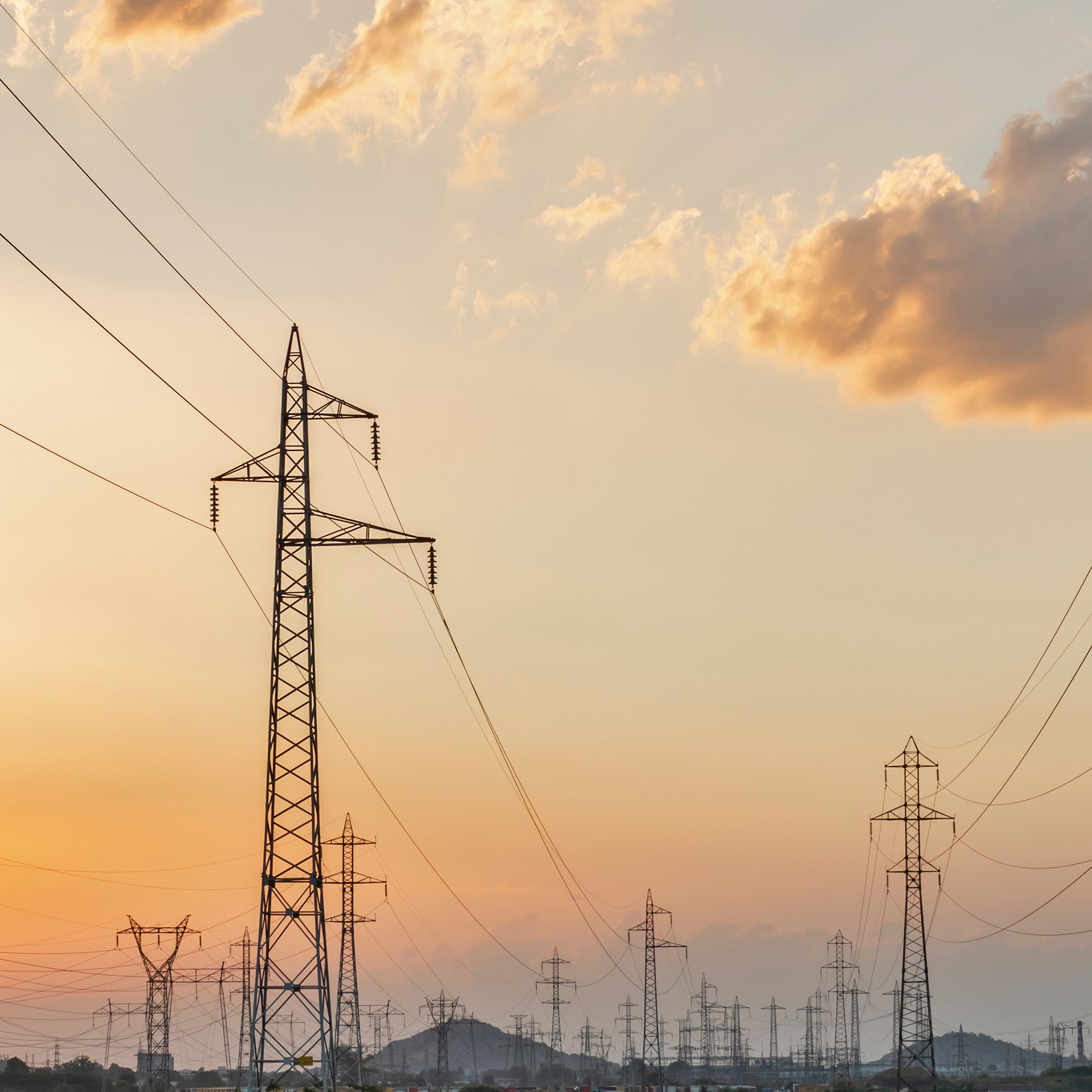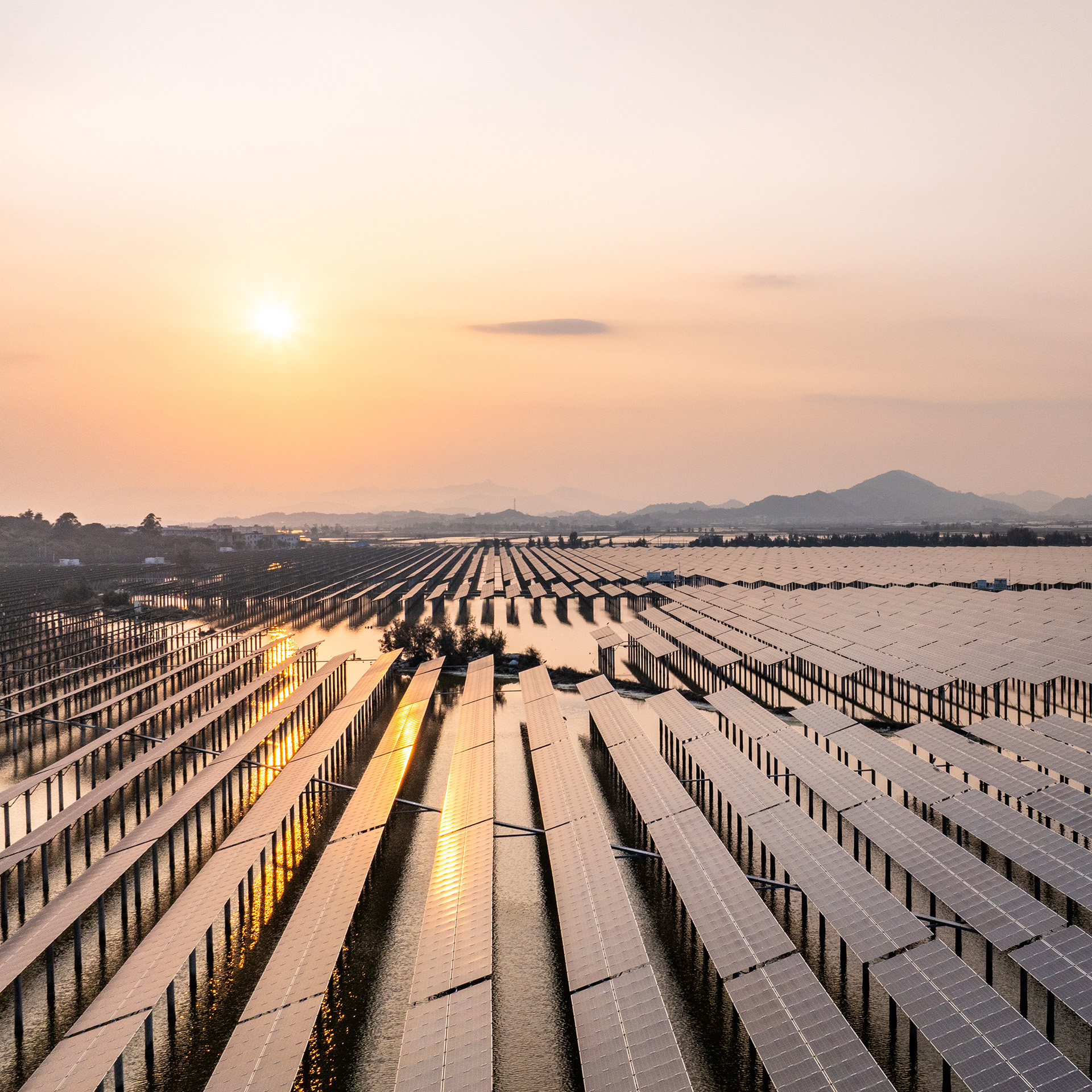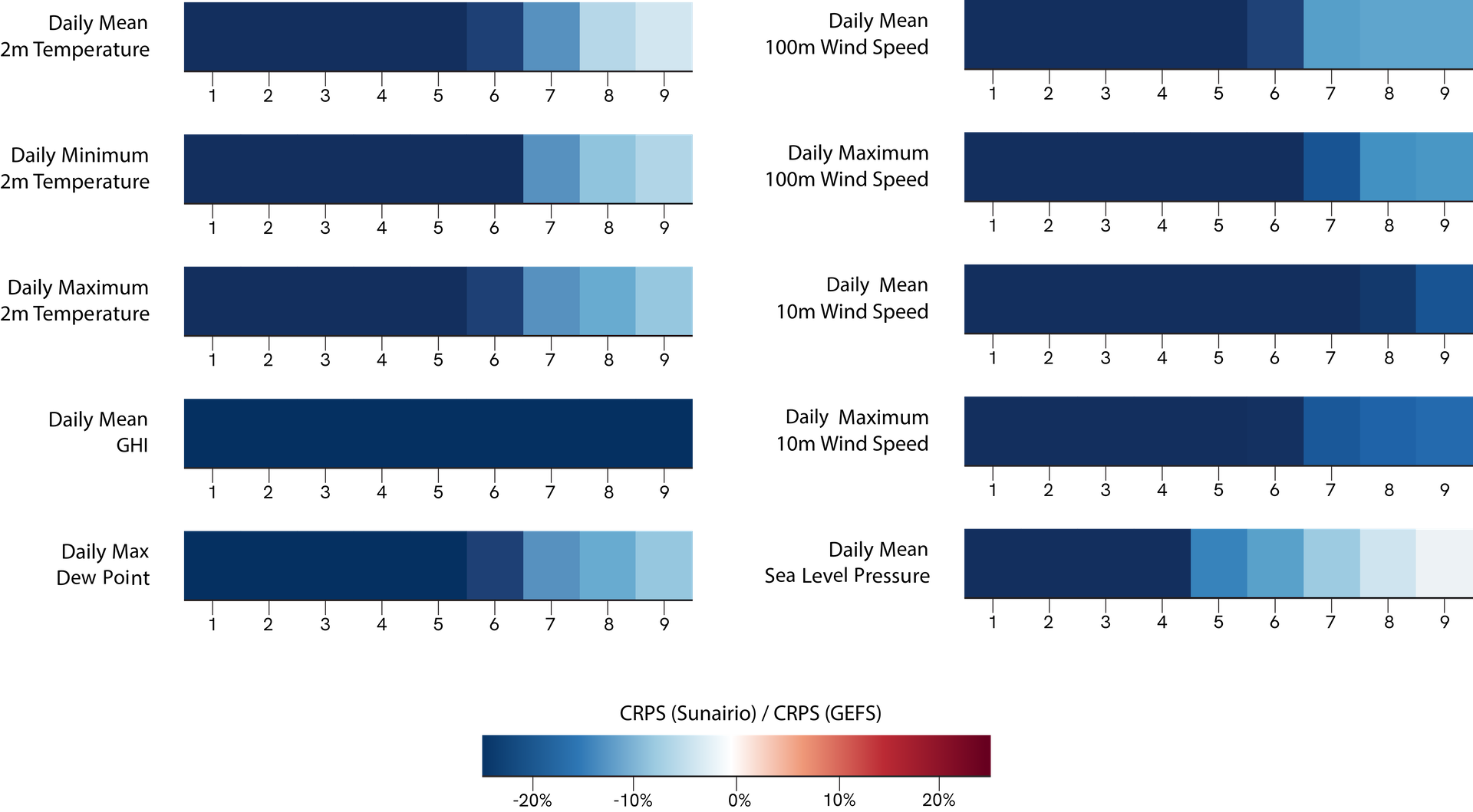Methodology & Validation
Sunairio ONE transforms the best forecasts into an actionable, high-resolution ensemble with unlimited runout. Our continuous coverage model harnesses a proprietary, high-resolution weather archive that can be downscaled to any location and elevation.
Sunairio and Sunairio ONE have received recognition from the National Science Foundation, American Clean Power, and EPRI. By fusing machine learning with climate science, our approach captures patterns that traditional datasets miss — with probability distributions you can trust.
Different
A new approach
We built the Sunairio platform by thinking differently. First, we created our own high-resolution historical weather dataset because we recognized the limitations of relying on the same public data that everyone else uses: a common, low-resolution view of the past that leads to an undifferentiated, coarse view of the future.
Next, we built a high-fidelity, long-range weather generation engine that fuses machine learning with climate science: it trains off the SHED but maps future weather distribution changes to the output of CMIP6 climate models and seasonal signals like ENSO.
Finally, we launched Sunairio ONE and bridged the two products, adding a large-ensemble, short-term forecast that provides seamless insights from up-to-date historical realizations through to seasonal and climate time scales.
Next, we built a high-fidelity, long-range weather generation engine that fuses machine learning with climate science: it trains off the SHED but maps future weather distribution changes to the output of CMIP6 climate models and seasonal signals like ENSO.
Finally, we launched Sunairio ONE and bridged the two products, adding a large-ensemble, short-term forecast that provides seamless insights from up-to-date historical realizations through to seasonal and climate time scales.


Historical
Sunairio High-resolution Earth Data (the SHED)
The SHED is our workhorse historical weather dataset. It’s a high-resolution, hourly, gridded historical weather archive created by downscaling the ECMWF’s ERA5 reanalysis product from ~30 km to 3 km. The SHED is available for the period 1950–present and is continuously updated in real time.
Zooming in from 30 km to 3 km represents a 100x spatial resolution improvement that drastically improves local weather modeling for wind, solar, and load assets. Read more about the underlying science and validation from our presentations at academic conferences like AGU and AMS.
This proprietary historical weather archive is the critical information advantage that enables Sunairio's forecast products to be generated at market-leading resolution.
Zooming in from 30 km to 3 km represents a 100x spatial resolution improvement that drastically improves local weather modeling for wind, solar, and load assets. Read more about the underlying science and validation from our presentations at academic conferences like AGU and AMS.
This proprietary historical weather archive is the critical information advantage that enables Sunairio's forecast products to be generated at market-leading resolution.
Future
High-fidelity, long-range weather generation
The original Sunairio weather generator is the result of years of R&D and a National Science Foundation (NSF) research award. The Sunairio weather generator is a hybrid ML/statistical generative engine that creates a 1,000-path ensemble of high-resolution weather either representing full (unconditional) climatology or seasonal climatology conditional on atmospheric states like ENSO.
This technology covers time horizons from 15 days to 15 years and is fully consistent with CMIP6 climate models.
This technology covers time horizons from 15 days to 15 years and is fully consistent with CMIP6 climate models.

Technology
Sunairio ONE: an Omniscale Next-generation Ensemble
Sunairio ONE is the latest forecast innovation from Sunairio. The ONE model generates a 1,000-path, high-resolution ensemble that’s seamless across short, medium, and long time horizons. It's constructed in three steps:
1
We start with a 1,000-path high-res Sunairio seasonal ensemble that generates weather for days 1–15 in the absence of a skillful hourly forecast.
2
We also build a deterministic medium-range (1–15 day) weather forecast by solving an optimal forecast combination problem considering a set of the best operational weather models (physics and AI). This is the Sunairio Control forecast.
3
We reshape the original ensemble within the 1- to 15-day period so that the ensemble spread matches the expected error or the Control forecast at every time step, yielding an ensemble forecast with high skill, correct probabilities, and seamless transition to day 15+.
The result = an exclusive, superior forecast you can’t get anywhere else.
Better data with a model that outperforms leading benchmarks
Sunairio ONE has higher skill than NOAA’s benchmark GEFS ensemble.

Reliable
A faithful ensemble spread that accurately characterizes risk
Traditional ensembles are underdispersive, meaning they show less risk than there actually is. To properly describe probabilistic forecast risk, an ensemble should have a spread (STD) equal to its forecast error (RMSE). Better forecasts have lower RMSE and lie closer to the 1-to-1 line. Sunairio ONE does both.
Average ensemble mean error vs. ensemble spread for 10m wind speed forecasts at 392 airport stations throughout CONUS at representative time steps. 12Z forecasts for 2024 (366 forecasts). Dots on the 1:1 line signify a perfectly calibrated ensemble forecast, while forecasts under the line are underdispersive (spread is too narrow) and forecasts above the line are overdispersive (ensemble spread is too wide).